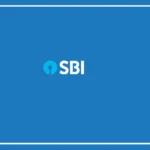New Delhi:
In a bid to modernize insurance procedures, IRDAI has mandated all insurance companies to issue e-policies, effective April 1.
This shift towards electronic policies, or e-policies, is designed to enhance accessibility and convenience for policyholders,
akin to the issuance of shares in electronic form.
Benefits of E-Policy Adoption:
E-policies, akin to shares stored in demat accounts, offer policyholders a myriad of advantages.
From the ease of access from any location to eliminating concerns about physical document loss, the digital format simplifies communication between insurers and policyholders, facilitating smoother claim settlements.
Transitioning to E-Form:
While the new mandate pertains solely to new policies, existing policyholders can opt to convert their traditional policies to electronic form for added convenience.
Here’s a step-by-step guide to the conversion process:
1) Open an e-Insurance Account (eIA)
Policyholders need to open an eIA to manage their e-policies efficiently.
2) Submit Conversion Form
Fill out a conversion form provided by the insurer, including details such as name, policy number, e-insurance account, and company name. Submit this form along with the eIA opening form to the insurer’s branch.
3) Confirmation
Upon successful conversion, policyholders will receive confirmation via SMS or email, ensuring a hassle-free transition.
4) No Charges
Notably, there are no charges associated with opening an eIA or converting policies to e-form, making the transition cost-effective.
5) Pre-Requisite: Apply for eIA
Prior to conversion, policyholders must apply for an eIA by downloading the form from their chosen repository and submitting the requisite KYC documents, including PAN, proof of date of birth, proof of identity, and proof of address, along with a passport-size photograph.
By adhering to these simple steps, policyholders can seamlessly transition to e-policies, enhancing their insurance experience with digital convenience.

























